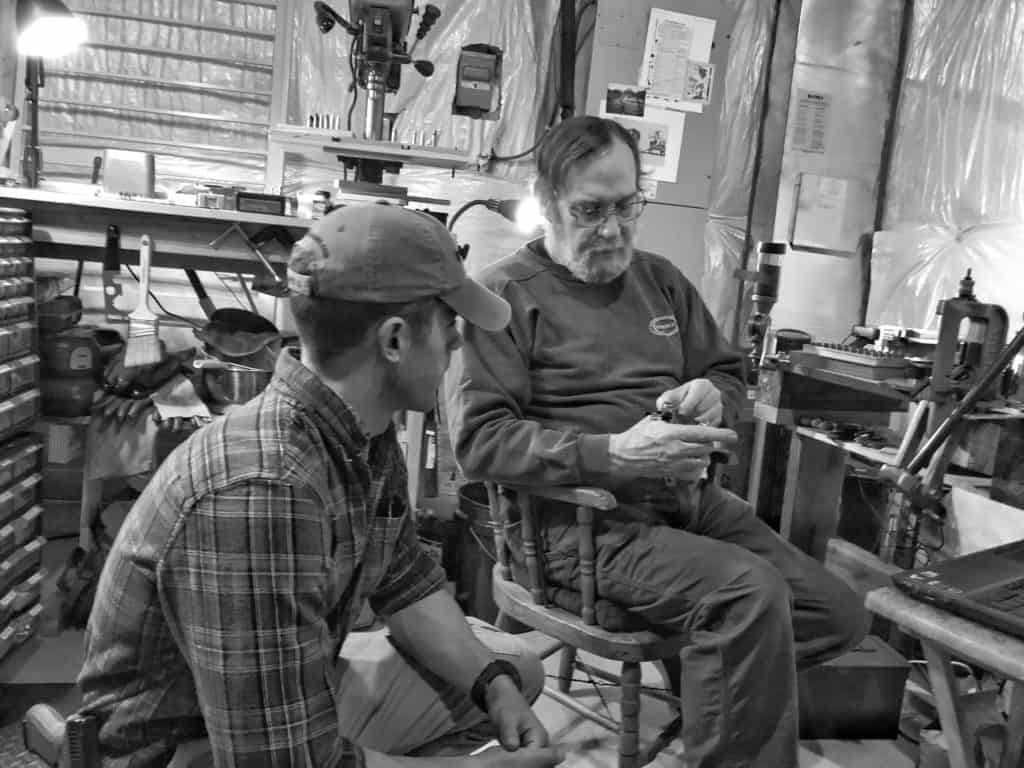"Reloading" (Making Your Own Ammunition) for beginners... can you? should you? why would you?
Dear Readers, Cobalt Firearm Instruction is a participant in the Amazon Services LLC Associates Program, an affiliate advertising program designed to provide a means for us to earn fees by linking to Amazon.com and affiliated sites. This post may contain various affiliate links. If you click them and make a purchase, it will not cost you a penny more, however a small commission will be paid to CFI to help keep the lights on, we will NEVER endorse something we do not wholeheartedly believe in, ever. Thanks!
With Walmart’s* decision to “stop selling all handgun and short-barreled rifle ammunition” still looming heavily in the rearview window, along with a recent disappointing election in my home state of Virginia when it comes to the second amendment, many people, even you brand new shooters, might be entertaining the idea of making their own ammunition. Or, at the very least, are looking to learn more about it. This post, thanks almost entirely to the expertise of John Maxwell (bio below, no, that’s not him in the picture) was intended for release a while from now, but I can’t imagine a better time to get this information to those who need it, so here goes.
*It is said that at last tally, nearly 1 of every 5 rounds of ammunition sold in the United States came from Walmart (source: CNN Business ; “Walmart has roughly a 20% market share for ammunition in the US”)
About John Maxwell
I’ve known John for a few years now and am honored to call him a friend. John comes from a service family with a long line of veterans. In addition to his own service in the Military and LE, John went on to have quite the impressive career in competitive shooting as well. Asking him for his bio can feel like pulling teeth. Not eager to brag, he gave me specifics on the following bona fides and I know they doesn’t even scratch the surface.
- Five decades + reloading experience
- Competitive shooter (using his reloaded ammunition in all matches where allowed.)
- Match winner 1982 Canadian IPSC Nationals
- NRA Indoor/outdoor Bullseye Expert
- NRA PPC Master
- GSSF Glock Meister
- Second Chance Bowling Pin HG/LG Master Blaster
What is "Reloading" ?
Simply put, reloading, is the act of assembling all the various components of ammunition by hand. Those components being the: Primer, Case, Powder, and Bullet. When you reload, instead of buying a box of pre-packaged, pre-made ammunition like you would at your local gun store (or Walmart if you had a time machine) you use tools (like those pictured here) that you own to assemble each round of ammunition exactly how you want it. This process is time consuming and can be dangerous if you don’t do it safely, but is the choice of many many shooters who look for anything from extreme accuracy, to lowering the amount of money they pay per round (notice I didn’t say lower the total amount of money they spend on ammunition) of ammunition they shoot.
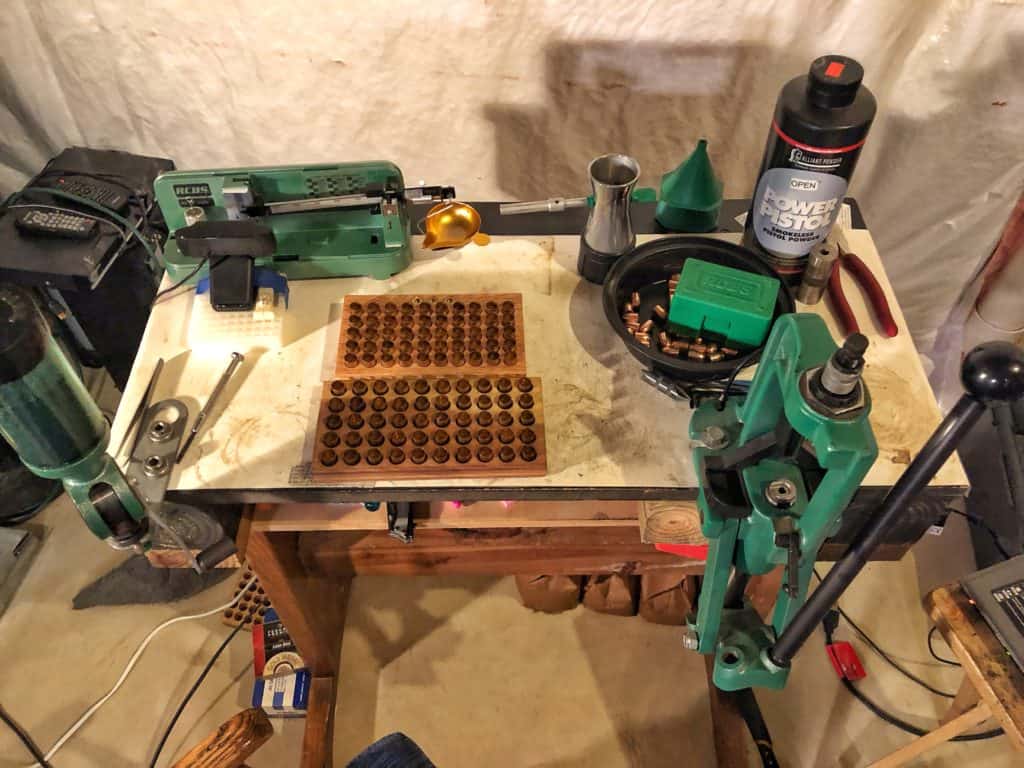
Sounds great right?
You’re dang right it does. If you’re ANYTHING like me, you’ve got a vision in your mind of your rustic reloading setup in the garage. Good music is playing in the background, and you’re in your happy place as you pump out round after round of ammunition, all while spending less than you EVER did buying it boxed. After that explanation I was ready to dive in head first. I was going to save money, shoot more ammunition, and just generally have a great time being a reloader.
SLOW DOWN.
A lifetime of reloading, studying, learning from the greats, and teaching others this fine art and science, has given John Maxwell a 6th sense about the pitfalls for a new relaoder and his advice is as follows:
Figure out your goals FIRST. (Sound familiar?)
1. I want to have absolute control over my ammunition (accuracy, recoil, consistency.)
John says this is a great reason to start reloading. “With reloading you can alter recoil, maintain consistent performance across batches of ammunition, and tailor your ammunition to best fit your individual gun.” Since you will be controlling everything from the type of primer you use, to EXACTLY how much gunpowder goes in to each case, you’d be astounded how much control you can have over your ammunition time after time.
2. I can’t find ammunition for the gun I want to shoot.
Another very common reason people start reloading is that (just like with fashion and things like it) certain kinds of ammunition goes “out of style” and is hard to get your hands on. Learning the art and science behind building your own ammunition can allow you to be able to make your own ammunition regardless of what is being mass produced (or banned/in short supply) at any given time.
3. I want to learn a new skill that will make me more self reliant.
Absolutely. While not in the notes taken from John on this subject, it’s something he and I have spoken about and something I completely agree with. If you have the time and the money, there is something admirable about the desire to make yourself as self-reliant as you can be in all areas of your life, and providing the means to defend yourself and train to do so goes beyond just having a good trigger press. Good for you.
4. I’m going to save money..
Negative. John’s advice here is simple, “You will not end up saving money, you will most likely spend a bit more. Your cost per round will go down, but you will be shooting more and buying new equipment, don’t do this just to save money, because you most likely won’t. Do it so that you can shoot much more while spending the same money.“
Still want to learn about reloading?
While the glasses might not be quite-so-rosy anymore, I’m a firm believer that it’s best to go into every new endeavor with all the available information. Ok, so it’s going to cost more than I thought. Sure, it’s going to be a bit more involved than they made it look in the movies..
I'm still 100% ready to learn.. where do we start?
We want to keep this article shorter than the text of War and Peace so instead of walking you step by step by step through how to reload (knowing full well every single one of you is in a SLIGHTLY different situation), John had a better idea. Below you will find all of John’s recommendations when it comes to resources you can use to get started on your own along with the gear he deems best for the beginner reloader to get their hands on.
I can’t stress enough the depth of experience and proven results his opinions come from. Decades of anecdotal experience from competition to law enforcement to more training than many people would receive in two lifetimes have lead him to his recommendations as they stand now.
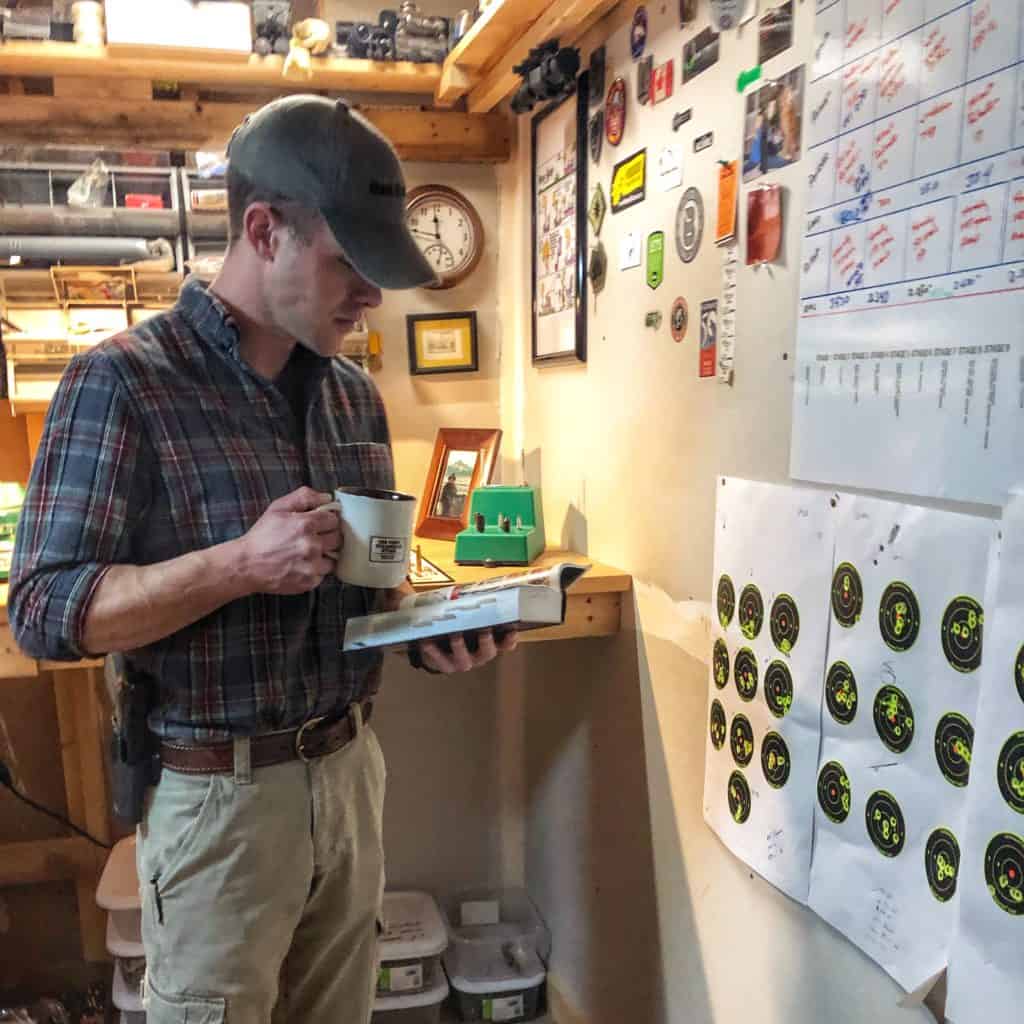

Reloading for Beginners - Resources
*START LEARNING BEFORE YOU START BUYING*

The journey of a million miles starts with a single step. If you know anything about reloading you understand that there is going to be a lot of equipment to buy, classes to take, more equipment to buy, books to read, and so on. It can seem daunting, but John says the best way to start your reloading journey is to start learning before you start buying.
Reloading Manuals
NOT JUST FOR THE “RECIPES” (“Recipes”: recommended combination of case, primer, powder, and bullet – often referred to as a “recipe”)
John suggests someone new to reloading start by reading these books to learn the “why’s” and “procedures” outlined in the first few chapters of each. Get to understand the universal language of reloading.
A foundation of knowledge that crosses barriers between companies and styles will serve you well in the future. A core knowledge of how things work and why they’re done a certain way when it comes to reloading will help you extrapolate through new problems and learn at a much quicker pace. Reloading (and the terms used) are not common-sense for many people.
You can follow the links shown here for various copies of some of the big companies’ reloading volumes available now.
Classes - No, they aren't dirt-cheap. Yes, they're worth it.
“It’s hard to learn something like reloading just sitting around and reading about it in a book. The books and forums and articles are great as “continuing learning” for someone who’s already learned the basics hands-on so they know what it is they’re learning.”
Not all of us are as blessed as I was when I began learning about reloading for the first time. On top of having John to speak with, I was friends with a number of lifetime-knowledgable resources more than willing to take me under their wing.
If that’s not the case for you, don’t despair. John gives high marks to a number of courses shown here. From the NRA Basic Reloading Course, to SDI’s Ballistics and Reloading Certification.
If you can find a trustworthy friend who can teach you about reloading then you’re a lucky one.
BE WARNED.
There are many who consider themselves “experts” who are very far from it. In his decades reloading John has run into a host of dangerously inept novices passing themselves off as experts. Always get a second opinion from someone you trust about anyone who you’re considering getting reloading advice from. Like I said above, this is dangerous if not done correctly and safely. I’ve been lucky to have the opportunity to not only pick John’s brain on the topic, but also Marine vet. Wes (pictured above) who has decades of his own reloading with phenomenal results, who was kind enough to invite me to a friends home and show me one hell of a time spending an afternoon in their unbelievable reloading man cave. Theoretical knowledge is enhanced exponentially by getting to see all the theories in practice and I’m extremely grateful for the opportunity to learn hands on from some truly excellent reloaders.
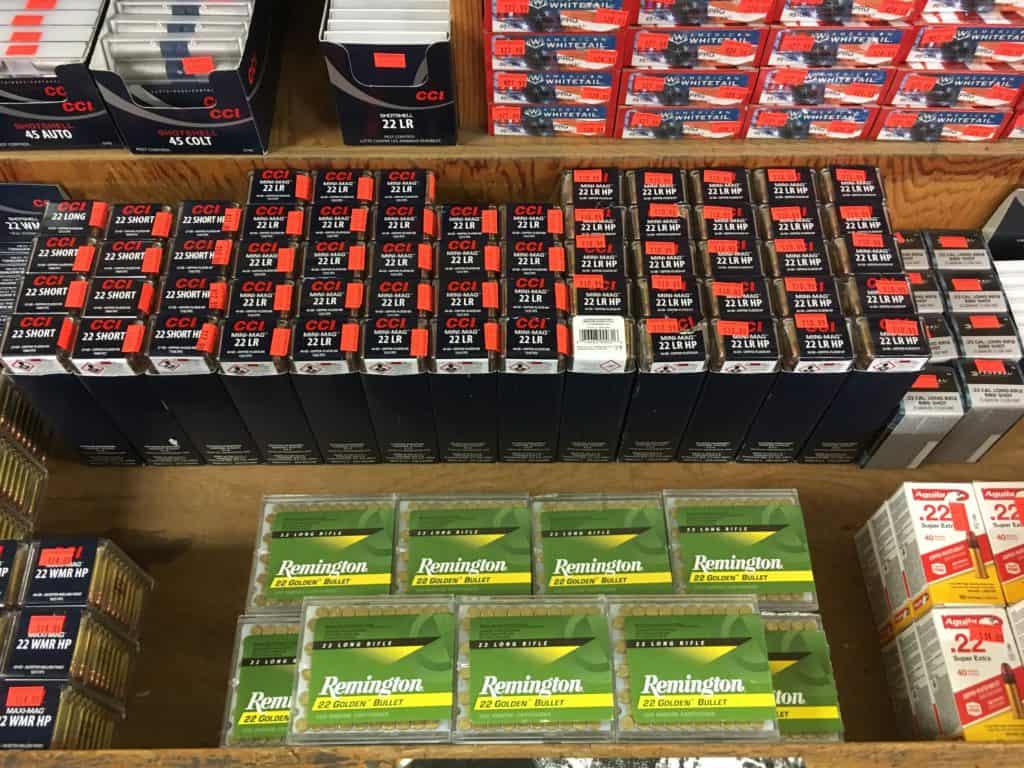
Mass-produced ammunition is just that: Mass-produced. It is not tailored to your firearm or your needs, but the median of what they think shooters are looking for.
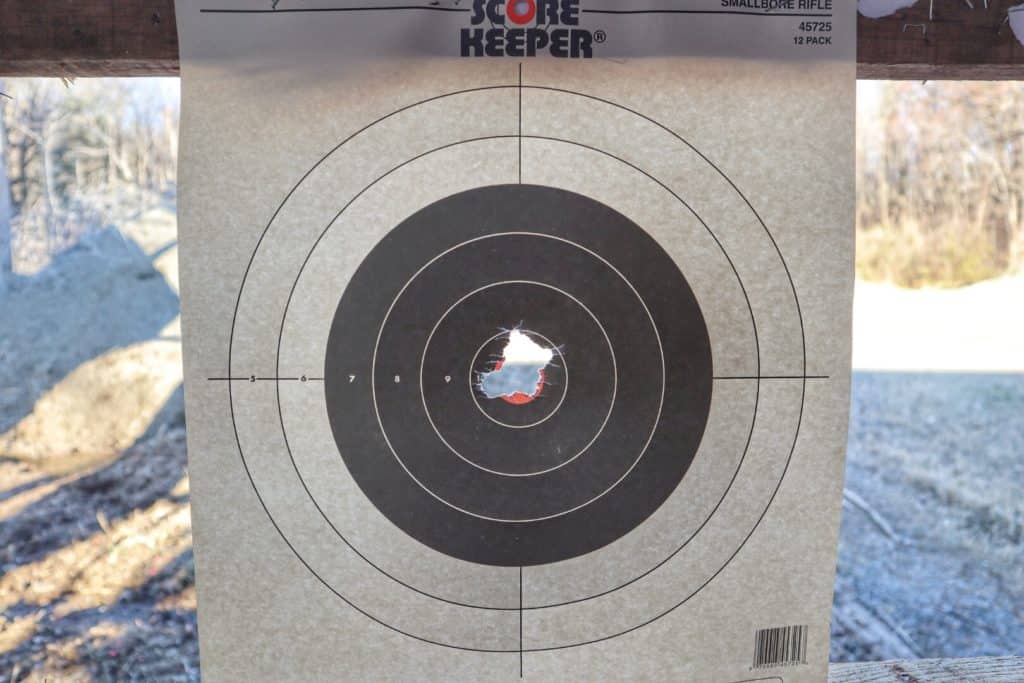
Improved accuracy is a common reason for people to get into reloading, and those results are not just found in rifle reloading, either!
"Continued Learning Resources
Once you get a grasp of the basics, check out these links here for some good forums and discussions on reloading.
Cast Boolits– “This a good place across the board for reloaders. A good place to go and ask questions.” – John
Hodgon– “Hodgon, IMR, and Winchester powders are popular, you can find good information about them here.” – John
Bullet Manufacturers Websites

Reloading for Beginners
Starting Equipment
*START WITH SOME SOLID BASICS*

Once you’ve got your learning well underway, you’re going to need some gear. John’s advice here is once again SIMPLE:
“Get a proper reloading area defined and set-up first. Look at someone else’s reloading space for a good estimate on measurements. DON’T FORGET LIGHTING. Start with the foundations, and build from there. If you can find a reputable place for used equipment, get it.”
Let’s check out John’s tips for getting started and the bare minimum tools for the new reloader.
Set Up The Space
- Choose the right area for your reloading bench – make sure you have more space than you think you need and make sure it’s level.
- INSTALL ADEQUATE LIGHTING
- Get a sturdy, solid bench and a set of shelves.
- Think ahead and make sure you build in extra space for the future. Your reloading needs, skills, and space requirements will grow.
- Settle on the calibers you will start reloading (help you in your purchases next.)

Your reloading area doesn’t always have to be massive, check out this example of a “portable” reloading bench from Wes.

Improved accuracy is a common reason for people to get into reloading, and those results are not just found in rifle reloading, either!
Make Your First Purchases
- Reloading Press.
- Single-stage if you only plan on loading 1 or 2 calibers in your lifetime.
- Turret Press if you plan on expanding your “reloading horizons” in the near future. (Best to avoid older turret presses due to the scarcity of tool heads.)
- Cast Iron presses for maximum strength and longevity.
- Look to reviews for indicators of good customer service from the manufacturers of whatever press you’re considering
- John likes a press that can “prime” as well. He says this choice is up to you.
- Look for a company that has been making presses for a LONG TIME. Just like stocks, you want proof of concept here along with the knowledge that they’ll be around for a while should you need to buy replacements.
- Powder Scale
- Powder Measure
- Dies
- Carbide for straight-wall pistol cases
- Taper crimp for auto pistol calibers
- Dial Caliper
- Loading Blocks
- Case Lube pad and Lube (lanolin oil easiest to clean.)
- Tumbler and media to clean brass.
- Primer pocket cleaning tools
- Case mouth chamfer tool.
- Case trimmer (most likely rifle calibers only.)
- Take a look at Midway, Graff and Sons, or Natchez for combination and package deals to get yourself started if you’d like.

WAIT!
*REMEMBER TO WATCH OUT FOR THE PITFALLS*
- GOING TOO FAST
Don’t try to crank out high volume before learning the basics.
2. TAKING SHORTCUTS
Don’t worry about saving time and money at the expense of safety and learning.
3. NOT INSPECTING POWDER CHARGE
EVERY TIME! Use a loading block.
4. BAD LIGHTING
Don’t settle for inadequate lighting around your bench, you’ll pay for it.
5. FLIMSY LOADING BENCH
You can imagine the consequences for yourself.
6. INADEQUATE STORAGE
Not having enough space leads to a cluttered bench which leads to accidents.
7. DISTRACTIONS
TURN OFF THE TELEVISION.
8. MAKING YOUR OWN RECIPES
Don’t use non published loads to start, you aren’t better than Hornady right out of the gate, don’t reinvent the wheel and risk getting someone seriously hurt.

Want to learn more?
I know there’s a ton more to talk about on the subject. Not only will we be posting more articles going more in depth into everything we’ve covered, but John has been kind enough to open his inbox to any questions you might have for him regarding reloading. If you fill out our Contact Form and list “Reloading” as the “course you’re interested in” all of your questions will be forwarded straight to John for a personal response to any and all of your reloading questions.

